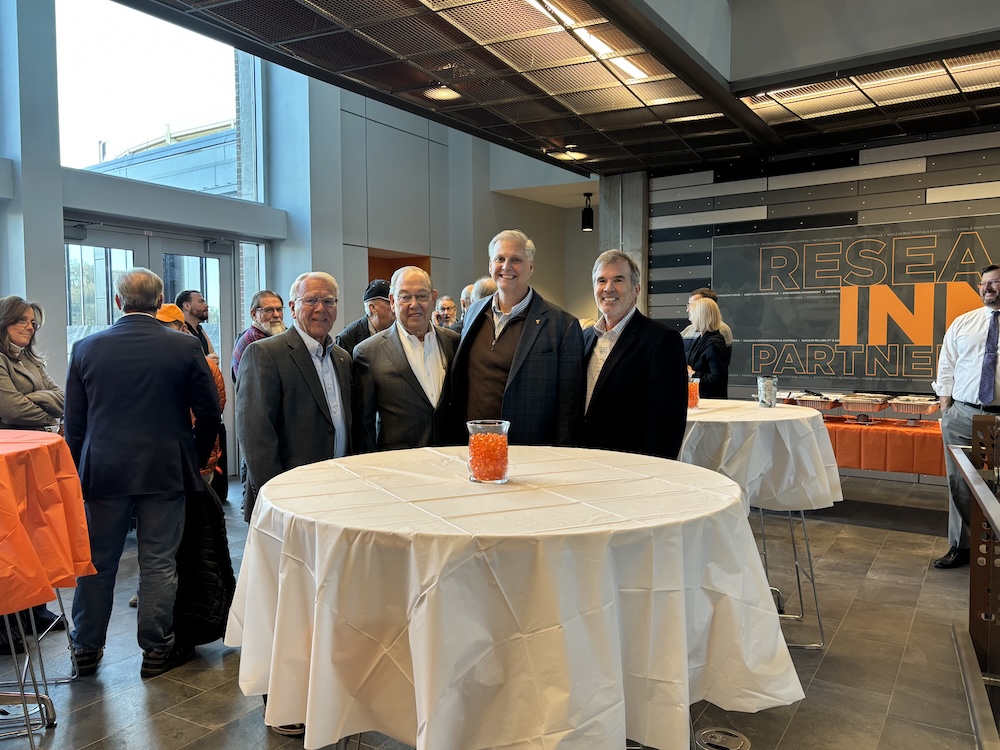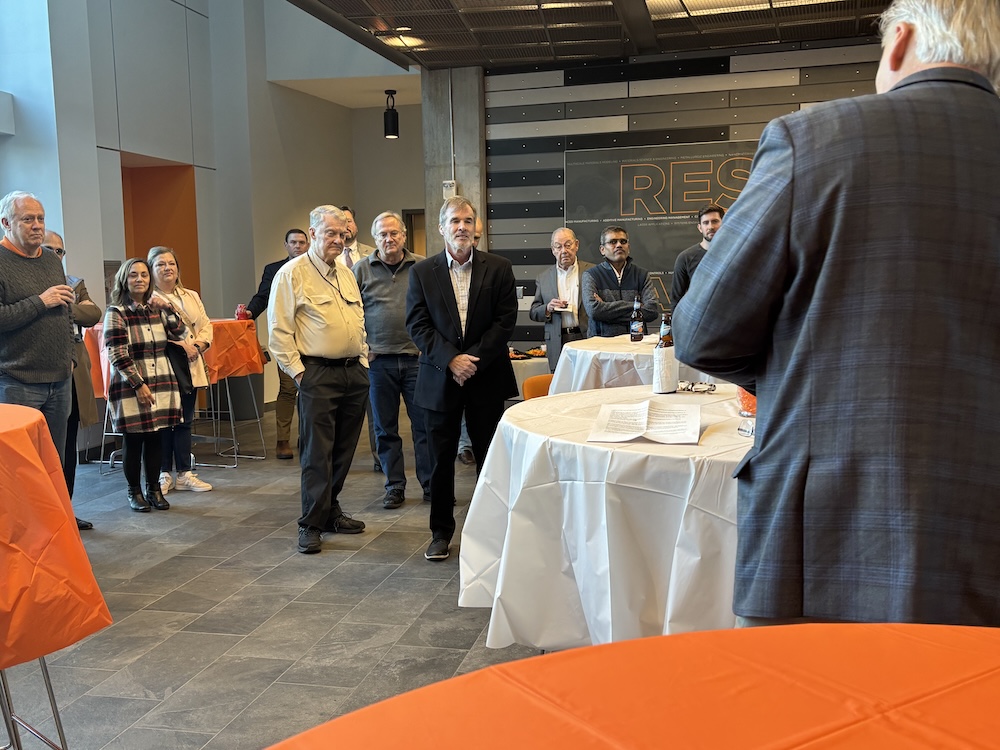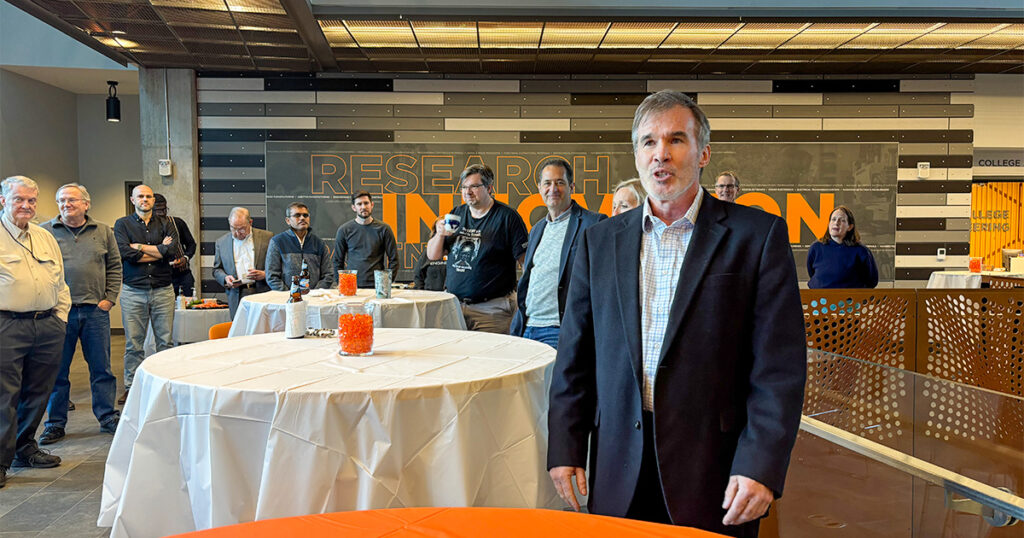Wes Hines made an annual trip to Washington, D.C., with his parents and the 11 other grandchildren in his family when he was growing up.
His aunt would take them all to see plays and provide them with other cultural experiences. His uncle, who worked for IBM, took Hines to the Smithsonian National Air and Space Museum when it opened in 1976.
Hines saw the Gemini reentry module and learned that his uncle helped design the spacecraft’s computer system. Hines, who was 12 years old at the time, was fascinated. It sparked a passion in Hines that led to a lifelong career in engineering.
Hines recalled that story during a retirement party in his honor last Friday at the Zeanah Engineering Complex, a structure he helped get built during his time at the University of Tennessee.
The Postelle Professor, Chancellor’s Professor, and former Nuclear Engineering Department Head retires at the end of December after 30 years of service at UT.
“Wes has been a dedicated faculty member and leader for this institution. We’re better off for it and we are going to miss him,” NE Department Head Brian Wirth said. “His service has been exemplary and his legacy at UT is secure through everything he has touched while he was here.”

Internationally recognized as an innovative leader in the field of nuclear engineering, Hines contributed to UT’s evolution into one of the top nuclear engineering departments in the country.
Hines, who worked as a naval officer on nuclear submarines from 1987–90, joined the department as research assistant professor in 1995, was promoted to full professor in 2005, and became department head in 2012. At that time, the Ohio native was serving as interim vice chancellor for research. He also served a stint as interim associate dean for research and technology for the college from 2008–09.
During his time as department head, research expenditures grew by more than five times from $3.5 million to nearly $18M per year while the faculty and student population greatly increased as well. Hines created a nuclear decommissioning minor at UT and a minor in nuclear power engineering as well as assisting Roane State in establishing a nuclear technology program.
Hines received multiple honors and awards throughout his career, including the Glenn Murphy Award, the Robert L. Long Training Excellence Award, the Arthur Holly Compton Award in Education and the Decommissioning and Environmental Science Division Award of Excellence. Hines was named a Macebearer last spring, which is the highest honor that UT bestows on a faculty member.

“I’m really not the one responsible for all of the things mentioned about me today,” Hines said at his party. “It’s everybody in this room and a lot of people that aren’t in this room. It’s the faculty, the leadership, the staff, the students—we did that together.”
Hines, who has mentored more than 20 graduate students to complete their PhDs, gave credit to his own mentors at UT, including Bob Uhrig, Belle Upadhyaya, Tom Shannon, Wayne T. Davis, and former chancellor Jimmy Cheek among others.
During the party, Hines was informed he’d been granted Chancellor’s Professor Emeritus status upon his retirement in recognition of his contributions to the university. The NE department also commissioned a piece of artwork in his honor that featured a football tailgating scene from ZEC with a mat board signed by his colleagues and friends.
After Hines spoke, his wife Tangie addressed the gathering.
“I just want to say thank you. You have no idea of the impact that you had,” she said with tears in her eyes. “Him being at this university allowed us to meet. It’s just amazing to have all these friends and colleagues in our life. Just know that every day you come to work, you make something special for students, staff, faculty, and everyone here at the university.”
Tangie joked about people asking what her husband will do once he retires.
“Whatever I want to do,” he said.
“And I say, ‘how is that any different?’” she said with a laugh.
Contact
Rhiannon Potkey (865-974-0683, rpotkey@utk.edu)
